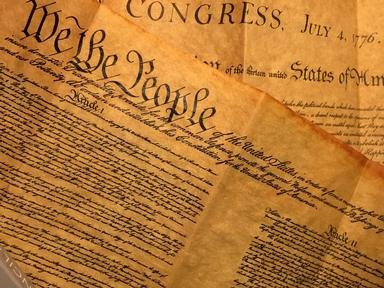Quiz Answer Key and Fun Facts
1. Who was the first person in US history to be impeached by the House of Representatives?
2. The attendance of senators during trials has historically been sparse. This was recognized by Senator George F. Hoar in 1905 who recommended that a Senate committee receive evidence. This necessity of this idea was revealed in this judge's trial in May 1933. The attendance was so low that at one point, the House managers were presenting evidence to only three senators. Rule XI allowing evidence to be collected by committee was passed in 1934. Who was on trial?
3. This federal official, a District Judge, was impeached in 1986 on two charges of tax evasion and one of bringing the federal judiciary into disrepute. What is his last name?
4. The only Cabinet member to be impeached was William Belknap. What position did he hold during Ulysses S. Grant's administration?
5. Treason and accepting bribes are the only two crimes specified as impeachable. All other impeachment charges fall under "high crimes and misdemeanors", which is very ambiguous. This person is the only person ever to be impeached for treason. In addition, he was the first (but not the only) person to be disqualified from ever holding office again. Who was he?
6. Just because you're removed from office doesn't mean that you're out of politics. This federal judge was impeached and removed in 1989 for attempting to get $150,000 in bribes. In 1992, he was elected to represent Broward County, Florida. In 2004 he was on the House Rules Committee. Who is he?
7. There have been cases of impeachment for relatively minor reasons. The articles of impeachment against this judge contained only two "crimes", being drunk while sitting on the bench and drinking in his private life.
8. The trial of Senator Blount set up the arguably the most important precedent - members of Congress cannot be impeached.
9. A resolution was once proposed to impeach 140 federal judges. Why?
10. "An impeachable offense is whatever a majority of the House of Representatives considers it to be at a given moment in history." This definition of "high crimes and misdemeanors" was given in an (unsuccessful) impeachment proceeding against whom?
Source: Author
tralfaz
This quiz was reviewed by FunTrivia editor
bloomsby before going online.
Any errors found in FunTrivia content are routinely corrected through our feedback system.
